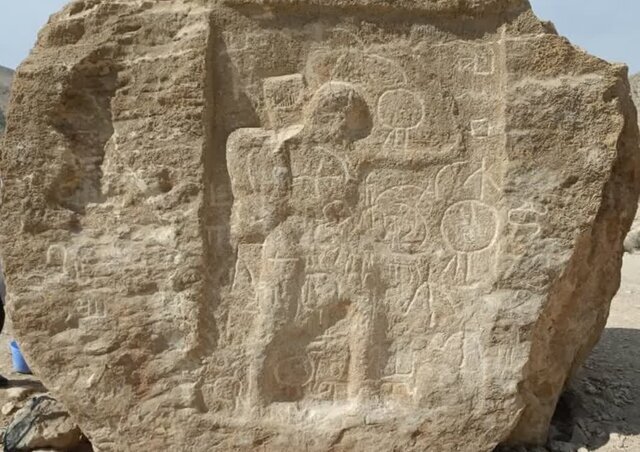Fars province’s sole Parthian stone relief restored

TEHRAN - The Fars province’s sole-surviving Parthian-era stone relief has recently been restored to preserve its historical significance, the provincial tourism chief said on Monday.
Mohammad Sabet-Eqlidi announced the restoration’s completion during a visit to the site of the bas-relief, which overlooks the ancient city of Qir, ISNA reported.
The official explained that the relief, which was located in an open environment, had suffered from human and chemical damage. After thorough assessments and initial documentation, a restoration plan was carried out on the relief.
The relief depicts a Parthian soldier in the act of shooting an arrow with a quiver strapped to his back.
He added that the ancient work of art had sustained damage such as cracking, weathering, and biological deterioration. Following precise documentation, initial cleaning was carried out, including the removal of dust and some graffiti from the surface, using restoration materials, the official explained.
Sabet-Eqlidi also mentioned that cracks and other damaged areas were carefully restored using special strengthening materials by experts in stone restoration, following established conservation principles.
Previous reports revealed a deteriorating condition of the relief, which suffered structural cracks and partial collapse due to years of neglect and exposure to environmental factors.
Carved into a mountainside near Qir, approximately 20 kilometers from Firouzabad, the relief which measures about 1.20 by 2.40 meters was inscribed on Iran’s National Heritage List in 1975 under registration number 939.
Glimpses of Parthian era
The Parthian Empire, also known as the Arsacid Empire, was a major Iranian political and cultural power centered in ancient Iran from 247 BC to 224 CE. Its name derives from its founder, Arsaces I, who led the Parni tribe in conquering Parthia, a northeastern region of Iran. At the time, Parthia was a satrapy (province) under Andragoras, a rebel against the Seleucid Empire.
Under Mithridates I (r. c. 171–132 BC), the empire significantly expanded, seizing Media and Mesopotamia from the Seleucids. At its zenith, the Parthian Empire extended from the northern Euphrates River (modern central-eastern Turkey) to present-day Afghanistan and western Pakistan. Positioned along the Silk Road, the empire thrived as a hub for trade and commerce, connecting the Roman Empire in the Mediterranean to the Han dynasty in China.
The Parthians assimilated various elements of the diverse cultures within their empire, which included Persian, Hellenistic, and regional influences. Initially, the Arsacid court adopted many aspects of Greek culture but gradually saw a revival of Iranian traditions. Parthian rulers adopted the title “King of Kings”, asserting their heritage from the Achaemenid Empire. Unlike the Achaemenids, who governed through centrally appointed satraps, the Parthians often allowed local kings to serve as vassals. The Arsacids did appoint a few satraps, particularly outside Iran, but these territories were smaller and less autonomous compared to the Achaemenid model. As the empire expanded, its central government shifted from Nisa to Ctesiphon, near modern Baghdad, though other cities also served as capitals.
AM
Leave a Comment